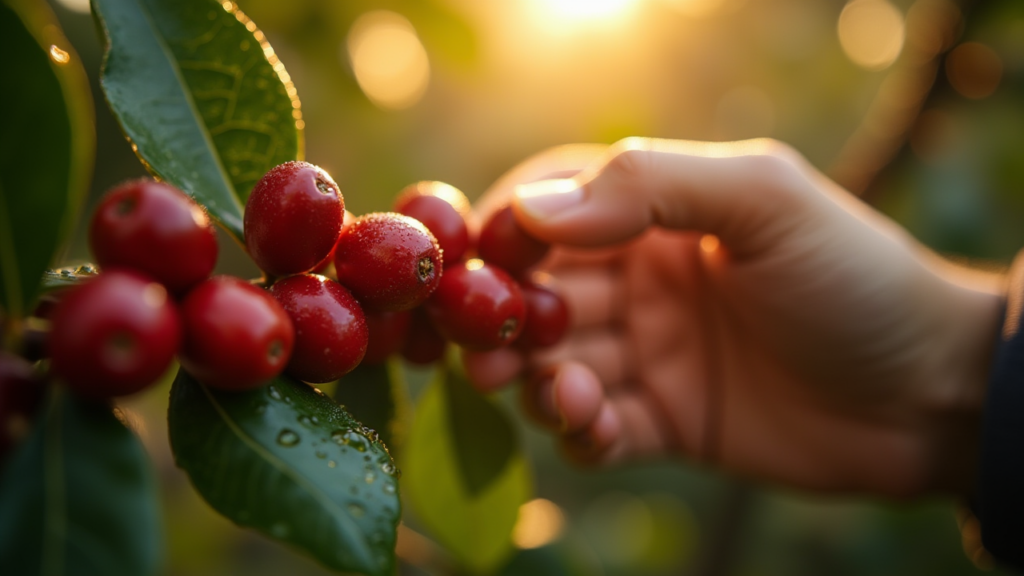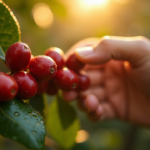The early history of coffee grew alongside the name Typica. For many coffee lovers, Typica coffee set the standard for measuring coffee quality. For the past 200 years, people have argued about whether coffees are good or bad based on how they compare to Typica’s flavor. However, the coffee industry is slowly taking away Typica’s “queen” status that it once held. Even though Typica produces a lot of coffee, it doesn’t fight off pests and diseases very well. This makes farmers less interested in growing it nowadays.
Let’s talk about Typica, a special type of coffee that’s been around for a long time. It’s like the grandparent of many coffees we drink today!

The Story of Typica:
Typica coffee has been around for centuries and has quite a journey:
- It started in Ethiopia and spread to Yemen in the 1600s.
- From there, it traveled to India, Europe, and the Americas.
- For about 200 years, Typica was the main coffee people drank worldwide.
- It became the standard that all other coffees were compared to.
- As it grew in different places, it created famous coffees like Blue Mountain and Kona.
- Even today, coffee experts still use Typica as a reference for good coffee.
Typica‘s story shows how one type of coffee shaped the entire coffee world for centuries.
What Makes Typica Special:
- The Taste: Typica has a unique flavor. It’s known for being a bit sour, kind of like an apple. This comes from something called malic acid in the coffee. But don’t worry, it’s not too sour! The coffee also has a sweet taste that balances out the sourness. This mix of flavors is why many people love Typica coffee.
- Quality Over Quantity: Typica plants don’t produce as many coffee beans as some other types. They make about 20-30% fewer beans than another popular type called Bourbon. But what Typica lacks in quantity, it makes up for in quality. The beans it does produce are often really good.
- A Bit Delicate: One downside of Typica is that it can get sick easily. It’s not very good at fighting off diseases that attack coffee plants. This makes it harder for farmers to grow.
- Typica’s Family Tree: Many types of coffee we know today come from Typica. Some famous coffees like Blue Mountain, Kona, and Java all started as Typica. It’s like Typica is the parent, and these other coffees are its children.
- Typica Around the World: Typica has traveled a lot! It started in Ethiopia, then went to Yemen, India, and even made its way to the Americas. In fact, a lot of coffee grown in Latin America today comes from Typica plants that arrived there hundreds of years ago.
Famous Types of Typica:
- Kona Coffee: Kona Coffee is a special type of coffee that comes from the Kona District on the Big Island of Hawaii. It’s actually made from Typica coffee plants, the same kind that’s been grown for centuries. But what makes Kona coffee unique is where and how it’s grown. The Kona area has perfect weather for coffee, with sunny mornings, cloudy afternoons, and rich volcanic soil. Kona coffee is famous for its smooth, slightly sweet taste with hints of nuts and fruit. It’s also known for being very expensive. This is because it only grows in a small area, and farmers take extra care in growing and processing it. Most of the work is done by hand. To be called “Kona,” the coffee must be grown in the Kona District and meet strict quality standards. All these factors make Kona coffee a prized drink for coffee lovers around the world.
- Blue Mountain Coffee: Imagine sipping a coffee so rare and exquisite that it’s often called the “Champagne of coffees” – that’s Blue Mountain Coffee from Jamaica. Grown in the misty peaks of Jamaica’s Blue Mountains, this coffee is a descendant of the noble Typica variety, thriving in rich soil and cool temperatures that create perfect growing conditions. Blue Mountain Coffee is famous for its mild flavor, lack of bitterness, and a slight sweet taste that coffee lovers around the world crave. Due to its limited growing area and the care taken in its production, Blue Mountain Coffee is one of the most expensive and sought-after coffees globally, often reserved for special occasions or given as luxury gifts. The Jamaican Coffee Industry Board strictly regulates its production and export, ensuring that only the finest beans bear the prestigious Blue Mountain name, making each cup a true taste of coffee perfection.
- Maragogype Coffee: Imagine a coffee bean so large it’s nicknamed “elephant bean” – that’s the extraordinary Maragogype, a giant mutation of Typica coffee discovered in Brazil’s Bahia state in 1870. These colossal beans, often twice the size of typical coffee beans, are a sight to behold and create a uniquely mellow, less acidic brew that coffee enthusiasts treasure. Despite their impressive size, Maragogype plants are known for their low yield, making this coffee a rare and prized find in the coffee world. The name Maragogype (pronounced mah-rah-go-jee-peh) might be a tongue-twister, but its smooth, nuanced flavor with notes of chocolate and fruit is unforgettable. While not widely cultivated due to its low productivity, Maragogype’s exceptional taste and novelty size have earned it a special place in the hearts of coffee connoisseurs and adventurous brewers alike.
Even though Typica isn’t as popular to grow anymore because it’s tricky to take care of, it’s still really important in the coffee world. Many of the coffees we love today started out as Typica. Next time you drink a cup of coffee, think about Typica – the original star of the coffee world that helped make coffee what it is today!
